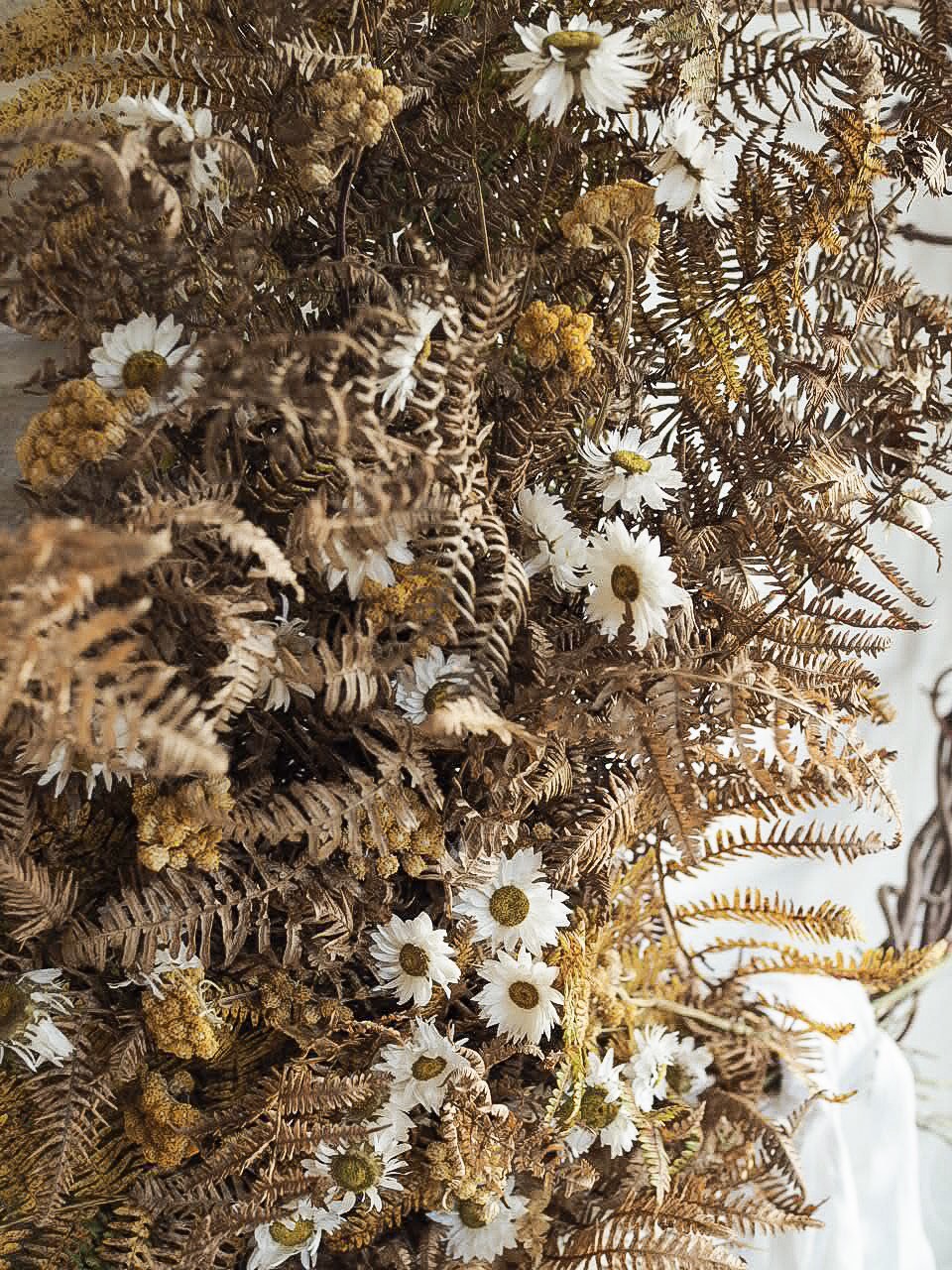Top Tips for Wreath Making
I’ve been making wreaths for many years now and through trial and error have pretty much nailed the best technique and materials to use, in my humble opinion.
As we are now entering wreath season proper (although for me, wreath season is all year!) I thought I would share with you some of my top tips so you can go forth and wreath with confidence!
The Base
Lets start at the beginning. Making your own wreath bases is sustainable, cost effective and if you use the right material, very easy. My style is asymmetrical which means I leave some of the base exposed, for this reason I love to use vines that have natural twists and turns to them as it really matches my wild style. Here are the materials I find the best to make bases with:
Honeysuckle - either from a loved ones garden or a the woods - please do take care when foraging, to only take what you need)
Hop vine - my current favourite, supple enough to wind easily which then firms up perfectly to be robust enough to last the distance
Birch - the long tendrils look stunning wrapped round en masse
Virginia creeper - I use this for my smaller wreaths, its not as strong as hop vine for example but the tiny twisty tendrils are to die for!
The technique
Next up is what I consider the best technique with which to secure the materials you use to the wreath base. What you use for this is entirely up to you, be it string, raffia or wire, I always use the same technique. Working with a long length of your chosen material, secure it at a certain point on your wreath base, keeping the length attached at all times, simple wind around and around the wreath base to secure the material you use to your base. Keep going until you are happy with your creation and simply cut and secure the wreath base. Simples!
The materials
Now for the best part, what materials to use. I use both fresh and dried materials when I make my wreaths, making sure that any fresh materials I do use will dry well. Its a bit of “see what happens” with regards to finding out what will dry well and as with all things in nature, nothing is guaranteed so you have to expect some failures. I grow and dry my own flowers, that last me for most of the winter months and for anything else I try to forage or at the very least buy materials that are home grown here in the UK. Here’s a few ideas to get you going, this is list is by no means exhaustive however:
Seed heads: nigella, rose hips, teasel, thistle, poppy, fir-cones
Grasses: quaker grass, bunny tails, barley, grasses from the meadows
Foliage: holme oak, bracken, eucalyptus, pistache (the late two, I buy from my local florist)
Flowers: strawflowers, delphinium, ox-eye daisy, crespedia, clover, hydrangea
So there you have it, a few of my top tips for wreath making! I hope this has inspired to go forth and get wreathing, I’ll be doing just that for most of December.
If you don’t have the time to go foraging or make your own wreath base, then I have a small number of DIY wreath kits available for sale in my shop here. You will find everything you need to make your own natural wreath this Christmas!
And if you would simply like to buy a wreath and enjoy it without the making, then I sell a number of my wreaths in my online shop here and also take commissions if there is something in particular you would like.






